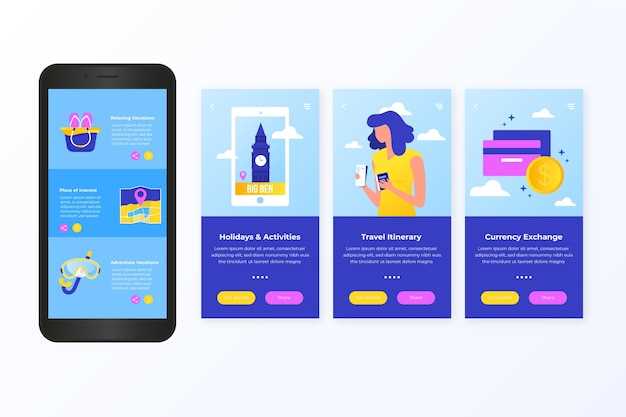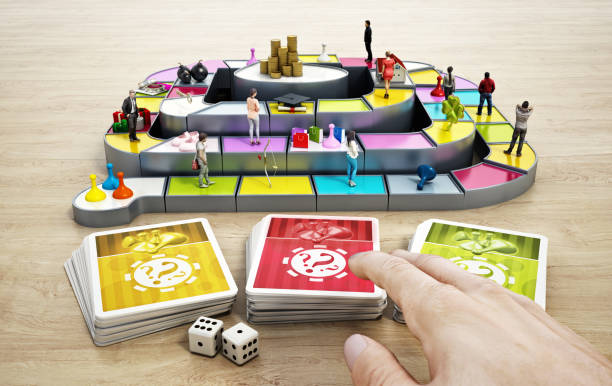Creating an engaging experience in application development is more than just aesthetics. It’s about connecting with users at a deeper level. Each tap and swipe holds significance, and it’s crucial to ensure that every element resonates with their expectations. Navigating the world of mobile interactions can be daunting. Yet, the art of seamless usability unveils a path toward captivating solutions.
When you think about the interactions, consider how every detail counts. Color schemes, typography, and spacing can either enhance or detract from the overall experience. Visual clarity should be prioritized, allowing users to focus entirely on their tasks. Understanding the psychological cues that influence behaviors can lead to more intuitive layouts.
In a landscape dominated by constant innovation, standing out requires creativity and strategic thinking. Users often seek simplicity but appreciate elegance, so striking this balance is key for any creator. By applying practical techniques that emphasize functionality and attractiveness, you can transform a basic concept into a memorable journey. Ultimately, this blend of form and function defines success in the digital realm.
As you delve into the nuances of crafting standout experiences, remember that feedback loops are instrumental in this evolving process. Continuous improvement should become a mantra, allowing you to adapt according to user preferences. Embrace the iterative nature of development, ensuring that your creations not only meet but exceed expectations, ultimately fostering loyalty and engagement.
Essential Guidelines for Mobile App UI Design

Creating a compelling experience for users is a fundamental goal when designing applications. A well-crafted approach can significantly impact user satisfaction and engagement. This section outlines important considerations to keep in mind. Each aspect contributes to achieving a smoother navigation process and a more enjoyable interaction.
First and foremost, simplicity should be at the forefront of your thought process. Every element should serve a purpose, eliminating any unnecessary distractions. Intuitive navigation aids users in finding what they need quickly. Clear labeling and iconography make it easier to understand app functionalities.
Another vital point is consistency across all screens. Cohesive elements help users feel familiar with the application. This fosters a sense of reliability and helps build trust over time. By ensuring that color schemes and typography are uniform, you maintain a professional aesthetic.
Accessibility cannot be overlooked. Design choices should accommodate diverse user needs and preferences. Think about color contrasts and font sizes to create an inclusive experience. Testing with users from various backgrounds enhances the design process, revealing potential obstacles.
For ease of understanding, pay attention to feedback mechanisms. Users should be clearly informed of their actions. Visual cues convey status effectively, making experiences more transparent. When a user performs an action, whether it’s submitting a form or changing settings, immediate feedback confirms the success or failure of that action.
| Guideline | Description |
|---|---|
| Simplicity | Minimize clutter; ensure every feature serves a clear purpose. |
| Consistency | Cohesive design elements create familiarity and trust. |
| Accessibility | Accommodate various user needs with thoughtful choices. |
| Feedback | Users receive immediate updates on their actions and interactions. |
In conclusion, focusing on these guidelines will help create a more effective application. It’s essential to prioritize user experience while balancing aesthetics and functionality. By continually refining your approach, you can achieve a meaningful connection with your audience. Engaging any individual in a seamless manner lays the groundwork for loyalty and satisfaction.
Understanding User Needs and Behaviors

Grasping what drives individuals’ actions is crucial. It’s about empathy, insight, and keen observation. Knowing what users desire and how they interact shapes effective solutions. Small details can have a significant impact on satisfaction.
What motivates someone to choose a particular solution? How do they navigate through options? Here, understanding comes from observing patterns and preferences.
- Conduct thorough research.
- Engage with your audience directly.
- Analyze feedback and usage data.
- Meet diverse needs and expectations.
Only by delving deep into the psyche of potential users can effective strategies be created, leading to experiences tailored precisely to them. Every choice made in the creation process should resonate with this fundamental understanding, ensuring that the outcome feels intuitive and rewarding to the end-user.
Behavior analysis provides invaluable insights. Observing how individuals interact with similar solutions can reveal gaps or opportunities. Each interaction builds a picture of their mindset. Consider habits, preferences, and frustrations.
- Identify key demographics.
- Create personas representing target users.
- Map out user journeys to visualize experiences.
By establishing a clear picture of who your audience is and how they engage, strategies can be implemented that cater to both their instincts and practical needs, creating a harmonious relationship between user and solution.
Research Techniques for Target Audience
Understanding the preferences and behaviors of potential users is crucial. It forms the foundation for creating experiences that resonate. The better you know your audience, the more effective your solutions will be. Various methodologies can provide insights into their needs and habits.
Surveys are a straightforward way to gather quantitative data. They can help identify trends and preferences. Interviews, on the other hand, offer a deeper qualitative insight. Engaging directly with individuals allows for nuanced understanding. Observational studies reveal how users interact with existing products, giving real-time context.
Combining these methods provides a comprehensive overview. In recent years, focus groups have emerged as a popular approach. They allow for dynamic discussions that can uncover hidden motivations. Ethnographic research is another powerful tool, immersing researchers into the users’ environments.
Each technique has its strengths. Consider a balanced approach to harness the benefits of diverse methodologies. A well-rounded understanding comes from integrating quantitative and qualitative data.
| Research Technique | Description | Benefits |
|---|---|---|
| Surveys | Structured questionnaires distributed to target demographics. | Fast data collection, easy analysis of trends. |
| Interviews | One-on-one discussions exploring user perspectives. | Deep insights and personal stories enhance understanding. |
| Focus Groups | Group discussions facilitated to gather diverse opinions. | Rich dialogue generates innovative ideas and feedback. |
| Observational Studies | Watching users interact with products in real-life contexts. | Reveals actual behavior and usage patterns. |
| Ethnographic Research | In-depth study of users’ habits in their environments. | Provides comprehensive insights into cultural and contextual factors. |
Creating User Personas for Better Design
Understanding your audience is paramount in creating effective products. It allows designers to craft experiences that resonate deeply with users. By portraying typical users, teams can focus their efforts on what truly matters. This approach ensures that the outcome feels tailored, rather than generic. It enhances engagement and satisfaction with the end product.
User personas serve as fictional characters that represent specific segments of your audience. They are created based on real data and research. These profiles encapsulate the needs, motivations, and behaviors of users. In essence, they humanize the statistical information, making it relatable.
A well-defined persona includes various attributes. Consider aspects such as age, interests, and goals. Understanding these dimensions helps in visualizing and empathizing with users. Here’s a brief overview of essential components for effective personas:
| Attribute | Description |
|---|---|
| Name | A fictional name to personalize the persona. |
| Demographics | Age, occupation, education level, and location. |
| Goals | Specific objectives the user hopes to achieve. |
| Frustrations | Challenges or pain points the user experiences. |
| Behavior | Typical actions and habits associated with the user. |
Building detailed personas requires comprehensive research, typically involving interviews, surveys, and observational studies. It also leverages data analytics to gather insights about the target audience. By synthesizing this information, teams can generate realistic and useful profiles.
Ultimately, the insight gained from these personas helps steer creative choices. It provides clarity during brainstorming and decision-making processes. Focusing on user-centered strategies leads to products that fulfill actual needs. The result? Higher satisfaction rates and increased loyalty. As a foundation, personas are invaluable tools in the creative toolkit.
Key Principles of Effective Interface Design

When crafting a visual experience, certain fundamentals guide the creation process. These elements shape how users interact with your platform and influence satisfaction. A thoughtful approach ensures clarity, efficiency, and enjoyment in navigation. Creating an engaging experience is vital for keeping users invested.
- Maintain simplicity and focus on essential features.
- Ensure consistency across all elements for ease of use.
- Utilize visual hierarchy to direct attention.
- Prioritize accessibility to cater to diverse audiences.
- Gather user feedback to make continuous improvements.
Focusing on these core elements not only enhances functionality but also builds trust and loyalty among users, positively influencing their perception of the entire offering.
- Understand your target audience and their needs.
- Keep navigation intuitive and straightforward.
- Incorporate responsive design to accommodate various screen sizes.
- Test designs with real users to gather actionable insights.
- Iterate based on feedback for ongoing refinement.
By embracing these principles, creators can cultivate an interactive atmosphere that resonates with individuals, ultimately leading to a more satisfying experience in every engagement.
Consistency and Familiarity in Navigation
Creating a seamless experience in navigation is vital. Users thrive on predictability. When they can navigate with ease, they feel a sense of control. This comfort encourages prolonged interaction with your platform. A well-structured layout promotes engagement and satisfaction.
Familiarity plays a critical role in how people approach applications. It allows users to transition between sections without confusion. This is where consistent elements come into play. By regularly employing similar icons and patterns, developers foster an intuitive environment. Consequently, users can derive meaning from their experiences effortlessly.
Navigation should not only be visually appealing but also intuitively understandable. The relationship between each menu option or tab ought to be clear. When users encounter recognizable gestures or symbols, they are less likely to feel lost. This feeling of familiarity can significantly reduce the learning curve associated with new applications. A cohesive structure, where icons and elements repeatedly appear in the same context, confirms to the user what action to expect next. Ultimately, a well-thought-out navigation system transforms a disjointed experience into one that feels harmonious and user-friendly.
Utilizing Visual Hierarchy for Clarity
Effective organization of elements dramatically impacts user experience. It guides attention. It helps convey messages effortlessly. When users interact with various features, a clear visual hierarchy allows them to navigate intuitively through the content.
Understanding how to prioritize information is essential. Visually distinguishing elements can greatly enhance understanding. This principle ensures that users can quickly identify what is most important. They can quickly grasp the purpose of each section without confusion.
Consider the following strategies when implementing visual hierarchy:
- Size: Larger elements naturally attract more attention.
- Color: Bright or contrasting colors can highlight key features.
- Placement: Positioning important items higher on the screen can improve visibility.
- Font Weight: Bold text can emphasize critical information.
- Whitespace: Allowing breathing space around elements can reduce clutter.
By effectively combining these techniques, a designer can create an environment where users find what they need without frustration; this not only enhances usability but also fosters a sense of satisfaction and engagement with the overall experience.
Best Practices for Enhancing User Experience
Creating an enjoyable experience is key to engaging users effectively. It’s about more than just aesthetics. A seamless journey can significantly impact satisfaction. Users appreciate intuitive navigational paths. The goal is to foster connection and ease of interaction.
When developing interfaces, simplicity should be a priority. Avoid clutter and distractions that can confuse. Clear actions lead to better results. Additionally, employing recognizable signals helps guide users efficiently.
Visual hierarchy plays a crucial role in conveying information. Users naturally focus on larger elements first. Bold titles attract attention and clarify structure. Well-placed images can enhance comprehension and break text monotony.
Feedback mechanisms are essential. When users perform actions, they should receive immediate responses. Whether it’s a subtle animation or a color change, feedback reassures users their efforts are acknowledged. Moreover, consistency in responses boosts credibility.
Accessibility cannot be overlooked either. A wide range of users engages with applications. Designing inclusively ensures everyone can participate. For instance, incorporating voice commands or adjustable text sizes caters to diverse needs.
Lastly, continually testing and iterating is fundamental. Gathering user insights helps uncover pain points. Regular updates based on feedback keep the experience fresh and aligned with user expectations. The path to improvement is an ongoing endeavor.
Optimization for Performance and Speed
Enhancing the responsiveness and efficiency of your application is crucial. Users expect quick load times and seamless interactions. When an application is sluggish, it can drive users away. Therefore, it’s vital to focus on various strategies that guarantee smooth performance.
Every millisecond counts. Slow apps can frustrate users instantly. Optimized elements contribute significantly to overall satisfaction. Consider simplifying image sizes and using optimized formats. Reducing unnecessary animations can also lead to a more fluid experience.
One important factor is code quality; maintaining clean and efficient code will prevent unnecessary delays. Minimizing the usage of heavy libraries or frameworks can greatly enhance speed. Furthermore, employing lazy loading techniques allows content to load as needed rather than all at once, which can notably improve perceived performance while reducing initial load times significantly.
Advanced techniques, such as caching data or employing a content delivery network (CDN), can ensure that data is delivered promptly, regardless of the user’s location. Streamlining network requests and minimizing API calls will also reduce wait times. Users may not notice these optimizations directly, but they will certainly feel the impact of a smooth and responsive experience.
Video:
5 levels of UI skill. Only 4+ gets you hired.
5 levels of UI skill. Only 4+ gets you hired. by Malewicz 443,495 views 1 year ago 11 minutes, 5 seconds
Q&A:
What are the key principles of UI design for mobile apps?
Key principles of UI design for mobile apps include simplicity, consistency, accessibility, and responsiveness. Simplicity ensures that the design isn’t cluttered, allowing users to easily navigate and find what they need. Consistency involves maintaining uniform elements throughout the app, which helps users familiarize themselves with the interface. Accessibility makes sure that all users, including those with disabilities, can effectively use the app, while responsiveness ensures that the interface looks good and functions well across different devices and screen sizes. Implementing these principles can significantly enhance the user experience.
How can I create a mobile app UI that is user-friendly?
To create a user-friendly mobile app UI, start by understanding your target audience and their preferences. Conduct user research to gather insights about what they expect and appreciate in a mobile app. Use a clean layout with intuitive navigation to allow users to find features quickly. Incorporate recognizable icons and labels to enhance usability. Additionally, conduct usability testing to gather feedback early in the design process, making it easier to identify any problematic areas. Finally, regularly updating the app with user feedback can also help improve its friendliness over time.
What tools are recommended for designing mobile app UIs?
Several tools are widely used for designing mobile app UIs. Some popular options include Sketch and Adobe XD, which offer powerful vector graphics and prototyping capabilities. Figma is another great choice, allowing for collaborative design in real-time. InVision is excellent for creating interactive prototypes and gathering feedback. For wireframing, Balsamiq and Axure are effective tools as well. Ultimately, the best tool will depend on your specific needs, the projects you handle, and your team’s workflow preferences.
Are there specific UI design trends that I should be aware of in 2023?
Yes, several notable UI design trends are emerging in 2023. Dark mode continues to gain popularity, providing users with a visually striking and battery-saving option. Minimalistic designs focusing on essential features are also trending, as they enhance usability and speed. Micro-interactions—small animations that provide feedback—improve the overall user experience. Additionally, the use of 3D elements and augmented reality (AR) features is on the rise, creating engaging and immersive experiences. Staying updated on these trends can help you design a modern and appealing mobile app UI.




